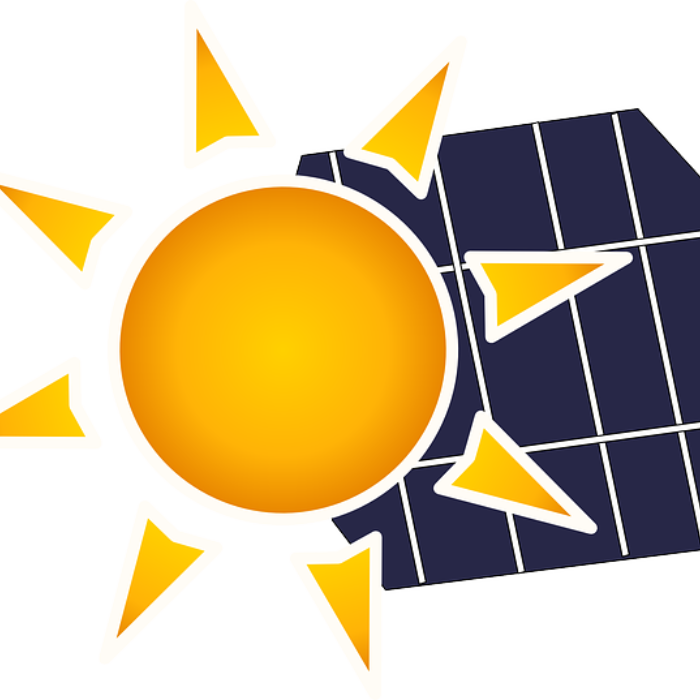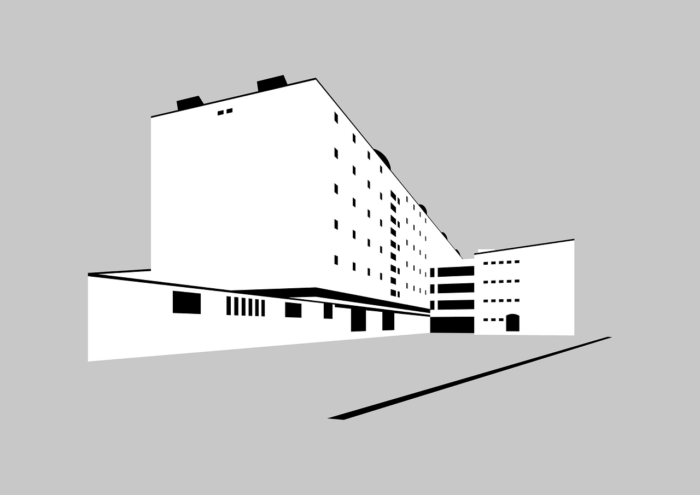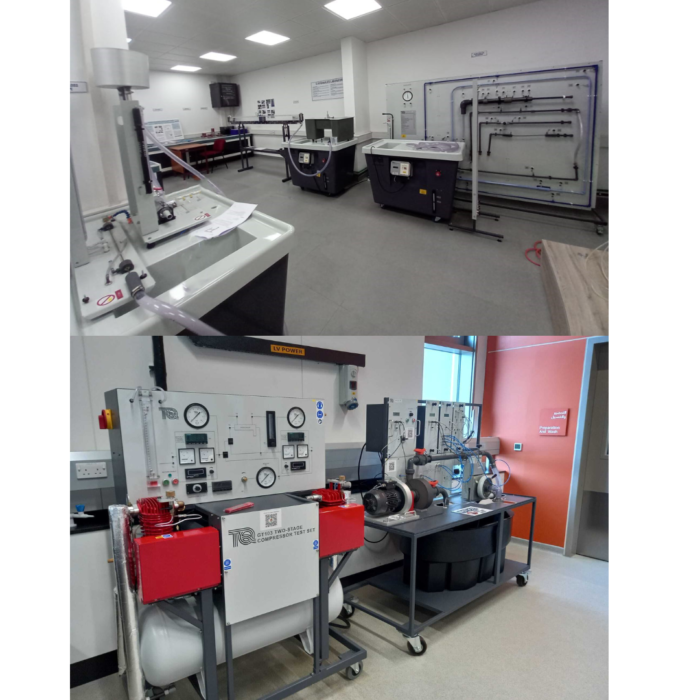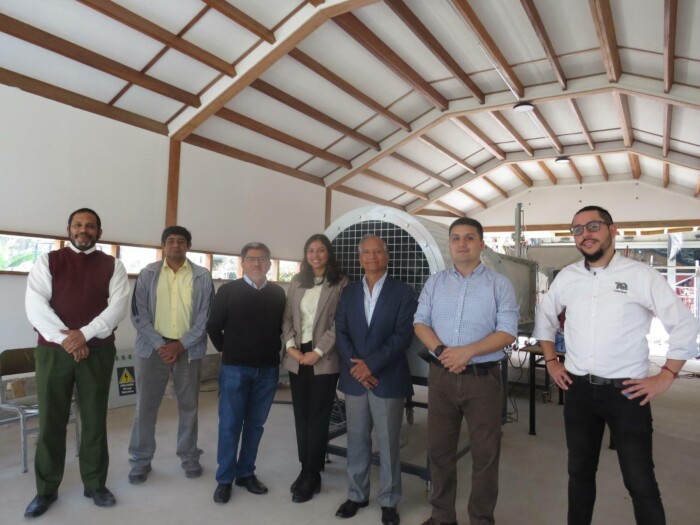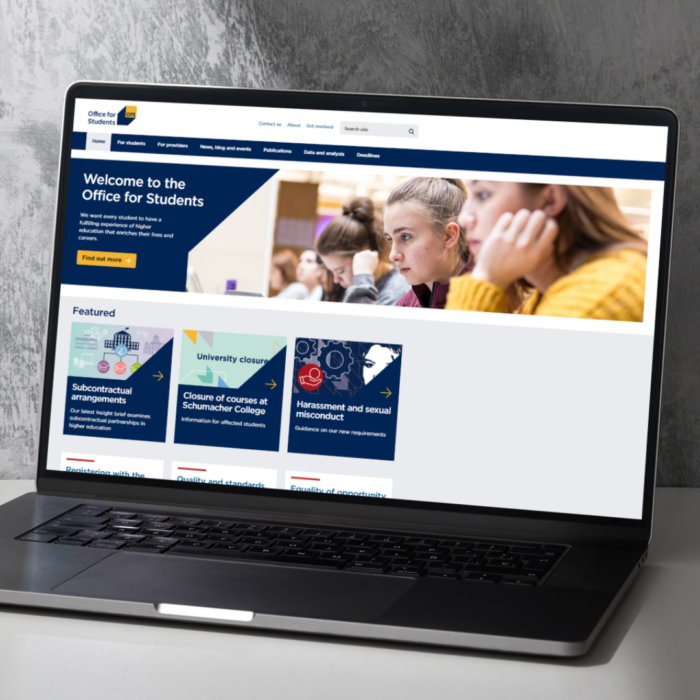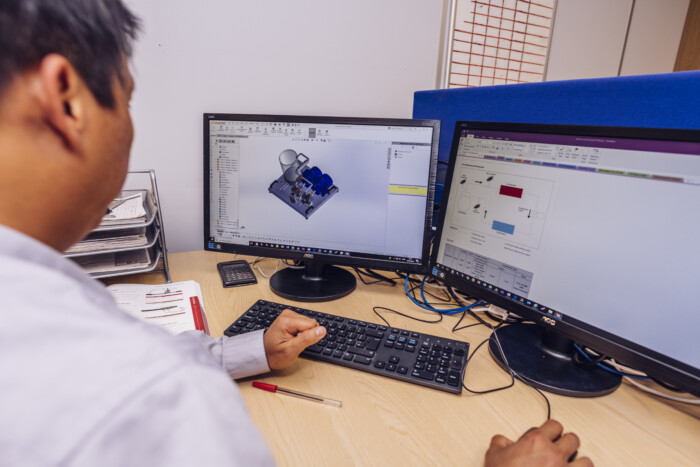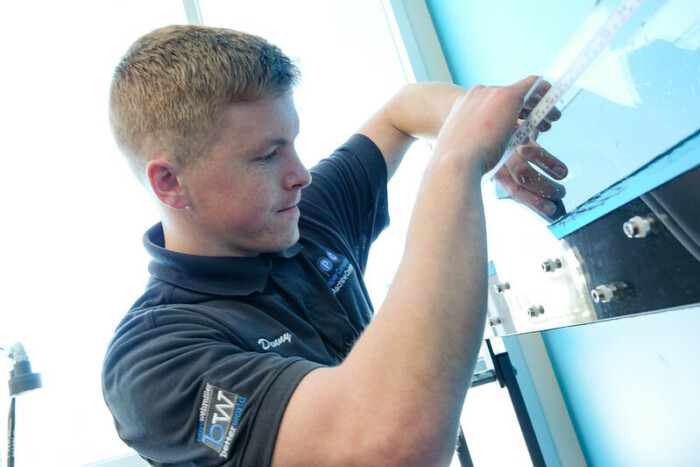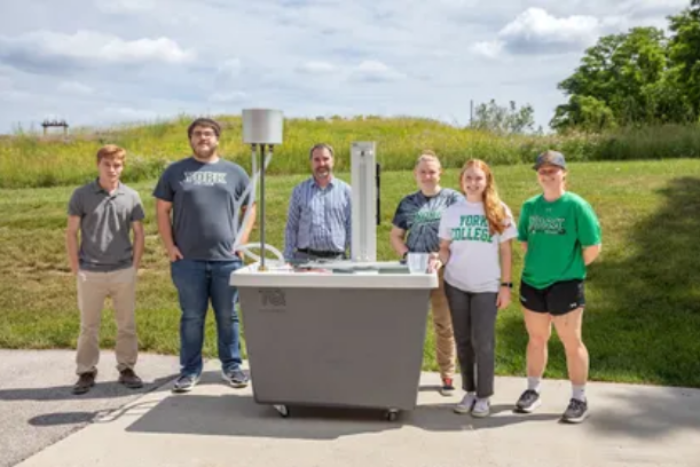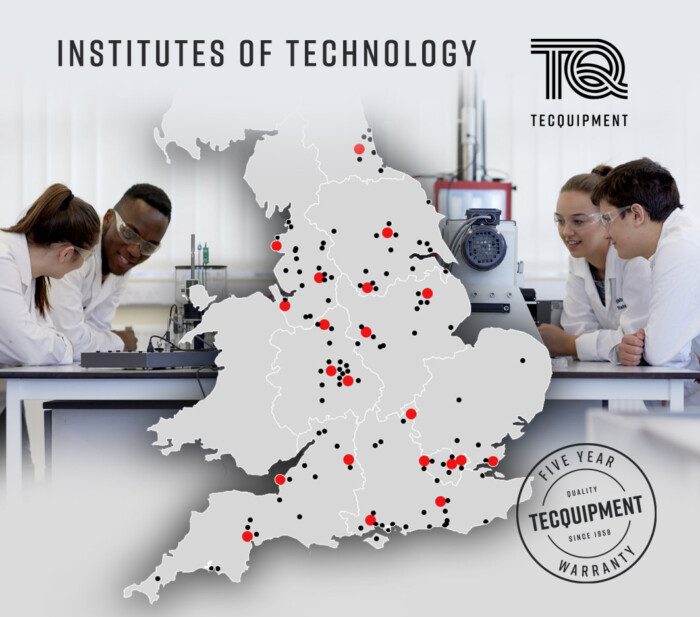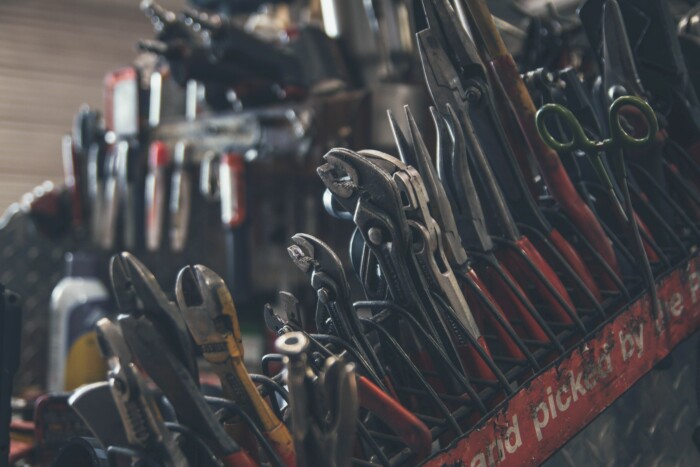Solar Energy
Photovoltaic (PV) cells that convert sunlight directly into electricity are one option.

These can be used in large arrays of many millions of panels, covering tens of square kilometres or in smaller systems to supply power to single households or businesses. Photovoltaic arrays are becoming more and more widespread, and are increasingly being used to provide clean energy, thereby helping to reduce non-sustainable energy consumption. Excess energy produced by solar arrays can be fed back into the grid.
Another way of capturing solar energy is to use the thermal energy of sunlight. Solar thermal systems range from small domestic systems which are often used to provide heated water for indoor heating and swimming pools, to vast arrays such as the Concentrated Solar Power (CSP) complexes in Spain. One design uses an array of mirrors, called heliostats, which track the sun and concentrate the sunlight at a fixed point on a large “power tower”. This immensely concentrated energy is used to melt salt, which stores the thermal energy to be converted into electricity when it is required. Another design is the parabolic trough array which uses a similar idea to concentrate thermal energy in pipes containing molten salt in tubes running along the focal axis of long linear reflectors in arrays covering vast areas of ground.

In order for students to understand the performance and characteristics of these different methods of harnessing solar energy, TecQuipment have designed a range of experiments covering the fundamental principles of radiant energy as well as the applications of these principles. By developing this understanding, students can apply it to real world scenarios and scale their knowledge up to address design and engineering issues that we find in industry.

Key Learning Outcomes of the Solar Energy Range
Radiant Energy Experiments
The TD1003 is a comprehensive bench-top apparatus that teaches students the key concepts involved in radiant energy, both for heat and for light. A thorough understanding of these concepts enables the engineering student to appreciate the design parameters of real world solar installations.

Experiments with the TD1003 include:
Heat Experiments:
- Inverse Square Law (or Lambert’s Distance Law/Area Law). Showing radiation is inversely proportional to distance squared
- Stefan-Boltzmann Law. Showing the relationship between radiation and source temperature
- Kirchhoff ’s Law. Showing that a body with good emissivity also has good absorptivity
- Area Factor. Showing that radiation transfer depends on the exposed area of the radiant source
Light Experiments:
- Inverse Square Law (or Lambert’s Distance Law/Area Law). Showing radiation is inversely proportional to distance squared
- Lambert’s Direction Law (or Cosine Law). Showing that radiation is proportional to the cosine of the angle between the emitter and the receiver
- Transmittance and Absorbance. Showing that optical filters can reduce light intensity
As with all the experiments in the Solar Energy range, the TD1003 is compatible with TecQuipment’s Versatile Data Acquisition System, allowing students to record and manipulate experimental data, create graphs, and to export data to other software packages such as LabVIEW.
Emissivity - Natural Convection and Radiation
Further studies of emissivity, and verification of the Stefan-Boltzmann Constant can be undertaken with the TE85 apparatus. This is a free-standing trainer which comprises a pressure vessel and a heated element, allowing exploration of heat transfer via Convection and Radiation, and helps students to understand natural ‘free’ convection, radiation, emissivity and the Stefan-Boltzman equation.

With these experiments covering the fundamental principles of radiant energy, students can start to look at the different methods of harnessing solar energy.
Photovoltaic Cells
Photovoltaic cells are probably the form of solar energy that we are most familiar with on a day-to-day basis, as we see PV panels on buildings, vehicles and in a wide variety of domestic and industrial equipment, as well as commercial arrays of all shapes and sizes.
The Photovoltaic Cells Apparatus (TE4) is based on the standard arrangement of an Array, Battery Storage and a Charge Controller. It includes instrumentation, extra connections and indicators to clearly demonstrate the operation of a standard arrangement. It also includes a Load Unit with a selection of suitable loads for a range of tests.

Experiments include:
- Performance Characteristics of a solar array
- Demonstration of Float Mode
- Demonstration of Load Cut
- Use and Efficiency of an Inverter
From these experiments, once students have mastered the operation of the array, they can undertake more detailed investigations such as:
- Predicting the array performance when fitted to different buildings and roofs
- Actual use simulation using timer circuits and the low voltage loads
- Comparisons of performance for different weather conditions
- Long term performance, i.e.:

Flat Plate Solar Energy Collector
In many countries, flat plate collectors are extensively used to provide hot water for domestic installations, swimming pools etc.
The TE39 shows how a flat plate solar energy collector works. It allows students to measure and find the efficiency and heat losses of a flat plate solar energy collector.
The collector has a purpose designed and built panel for quality and reliability. The panel has a thin sheet metal absorber backed by riser tubes and insulating material to reduce heat loss to the rear. A box with a clear cover encloses the panel, forming the collector. A sturdy mobile frame supports the collector. To allow users to adjust its angle, the frame has a hinge.

Cold mains water enters the collector. Sunlight energy heats the water in the collector. The heated water returns to a pump that mixes the heated water with the incoming cold water. A pressure sensitive valve allows the heated water to leave the equipment at the same rate as cold water enters it. A flow transducer measures the water flow rate and a solarimeter (or pyranometer) measures incident radiation. Thermocouples measure the water temperature at all the important points, and the shade temperature.
The separate Instrumentation Unit displays the temperatures from the thermocouples, the flow rate and the radiation intensity. It includes a switch to control the pump and a socket for connection to TecQuipment’s optional VDAS.
Principal experiments involve:
- Investigating the efficiency of the collector
- Relationship between efficiency and water temperature
- Effect of collector angle Looking at efficiency and heat loss

As with the other solar collectors, however, extended experiments can be undertaken over longer timescales.
Focusing Solar Energy Collector
The Parabolic Trough Reflector shown above uses the principle of a focusing collector. With the TE39, students can understand the principles, advantages and limitations of these types of collectors.
Experiments include:
- Demonstrations of the performance, advantages and limitations of a focusing solar energy collector
- Understanding the effective use of the direct component of solar radiation
- Measurement of the efficiency of the collector with and without a transparent cover
- Measurement of the maximum possible energy collector temperature
The TE38 apparatus has a mobile frame that holds a highly polished stainless steel, curved reflector. Students can adjust the inclination and azimuth (up and down and side-to side angle) of the reflector. The reflector focuses solar radiation onto a choice of four different energy collectors (supplied). A solarimeter measures incident radiation near to the reflector. Students use the different collectors and compare how they change in temperature with time when exposed to solar radiation.
The collectors are brass cylinders with an embedded thermocouple. Each collector has a different diameter to show the effect of different reflector-to-collector concentration ratios. A removable cylindrical cover of Pyrex glass (supplied) allows students to study the difference between shielded and unshielded collectors. Each collector has a matt black coating to give a consistent value of emissivity.

A bracket above the reflector holds a solarimeter (or pyranometer) that measures the incident radiation. Students use a moveable probe to measure shaded (ambient) temperature around the reflector. An Instrumentation Unit shows the shaded temperature, the collector temperature and the incident radiation. This unit converts the output of the solarimeter into a direct reading of radiation intensity in W.m-2.
The TE38 Focusing Solar Energy Collector is an excellent ‘follow-on’ to the TE39 Flat Plate Solar Energy Collector. The poor efficiency demonstrated by the flat plate collector can be compared to the improved performance of the focusing collector.
Summary
The above experiments are only a sample of the capability of the Solar Energy range. Students can extend the scope of their work to look at longer term patterns of solar radiation, weather variations, etc, and the scope for research projects is wide.
Using these trainers will equip the student with a thorough understanding of solar energy, and the considerations that should be taken into account when designing real world solar installations.
In conjunction with other TecQuipment products, such as our Thermodynamics range and our Power Systems range, an appreciation of the wide spectrum of engineering topics that are intrinsic to the needs of the Power industry in particular will be developed, and the student will be equipped to take that knowledge into the wider world after their period of study is completed.
For further details of any of the TecQuipment product ranges, and to see how they could be of value to your institution, please feel free to contact our team who will be more than happy to discuss your specific requirements and to put you in contact with your local TecQuipment Agent or Distributor.
Have a look at our full Solar Energy Range.

